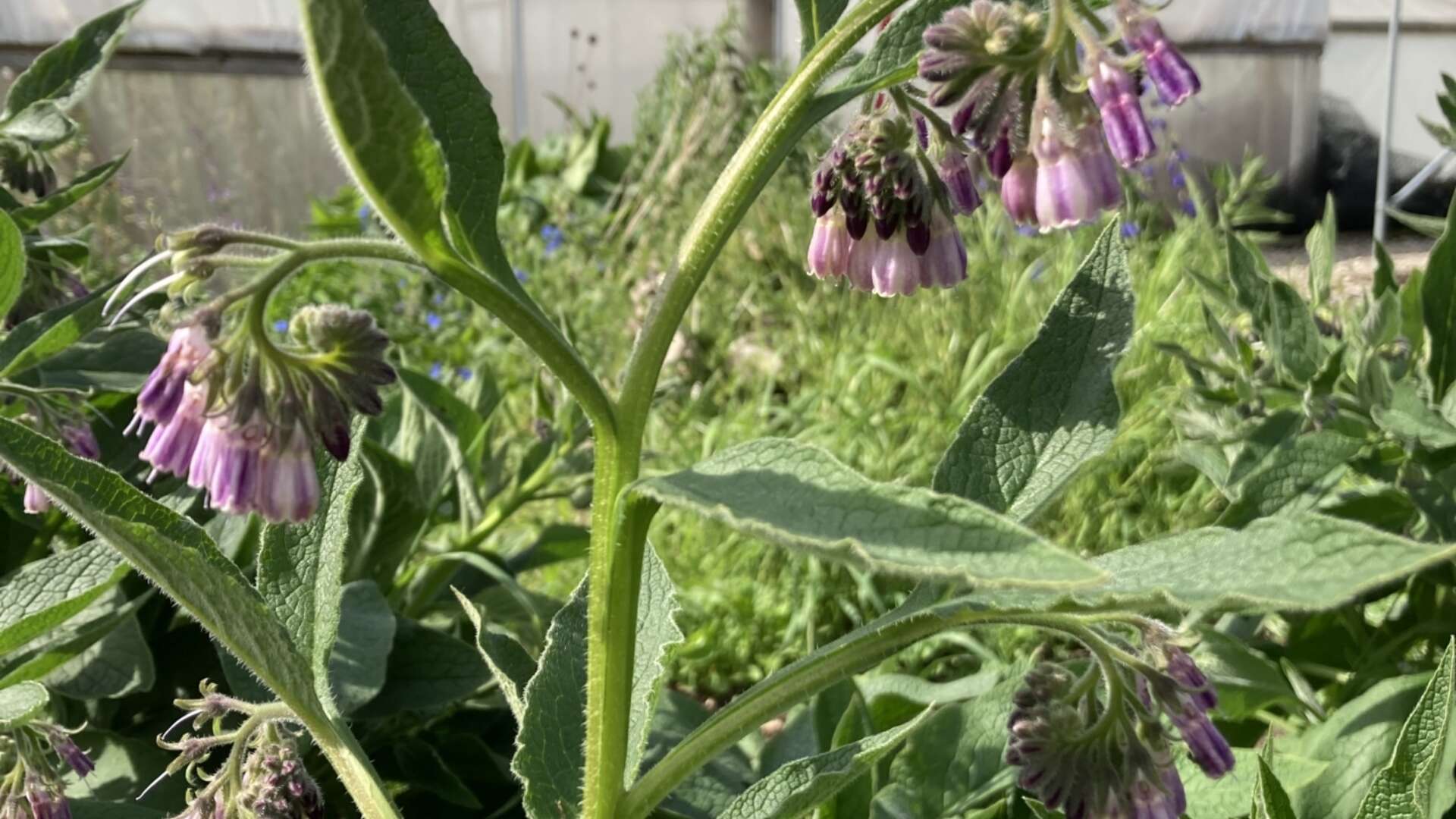
Growing comfrey
Choosing which comfrey variety to grow 🔗
There are many different types and varieties of comfrey grown in gardens. Symphytum grandiflorum and Symphytum caucasicum, for example, are grown for their flowers and foliage cover. Wild comfrey (Symphytum officinale) is an attractive herb, but it seeds freely, sometimes becoming a problem in the garden.
Russian comfrey (Symphytum x uplandicum) is the type we would recommend growing for use as an organic fertiliser. Learn more about some of the comfrey varieties in our collection, and ones we're still looking for here.
Where to grow comfrey 🔗
Comfrey can live for 20 years or more and needs a place in the garden where it can grow undisturbed and establish its deep root system.
Think carefully before you choose where to plant. If you need to move it in the future, you risk leaving parts of the root in the soil, which will regenerate.
Comfrey thrives in full sun on deep soil but will tolerate partial shade. It will grow on most soils, with the exception of shallow, chalky sites.
How many comfrey plants to grow 🔗
The number of comfrey plants you need depends on several factors: the size of your plot, what you want to use the comfrey for, and how well it grows on your site.
A small comfrey bed in the corner of your garden or allotment can be harvested several times a year, providing prolific amounts of mineral-rich leaf material.
As a rough guide, you'll need:
- 2 plants for a small garden
- 4-8 plants for a medium garden
- 15-20 plants for a large garden or allotment.
If you find you need more than you've planted, comfrey is very easy to propagate after the first year or growth by root cuttings or by creating offsets.
When to plant comfrey 🔗
Spring is the best time to plant comfrey. Plants started during March to May will have a full season to settle in before cutting the following year.
September is the next best time, while the soil is still warm and before the plant goes into dormancy for the winter.
Planting comfrey 🔗
Once you have chosen where to plant your comfrey, take time to prepare the bed well for this long-term crop.
Weed the plot well, removing all perennial weeds such as dock and dandelions in particular.
Plant your comfrey 60-90cm apart. On poor soils where growth won't be so vigorous, the spacing may be reduced to 30-60cm.
Caring for comfrey 🔗
Once your comfrey plants are rooted and growing well, they don't require much maintenance.
Regular weeding will remove competition as the plants establish. Remove any flowering stems that form in the first year to gain maximum leaf growth the following season.
Comfrey has three basic requirements to keep it cropping well:
- water.
- a healthy, fertile soil.
- regular cutting to harvest leaves and prevent flowering.
Harvesting comfrey 🔗
If your comfrey is newly planted, cut once in late spring and allow the plant to recover until the following year.
If your plant/s are established, leaves can be harvested approximately every six weeks from June. Don't harvest later than September as the plant will need to recover before it dies back in winter.
Feeding comfrey plants 🔗
Comfrey will grow without extra feeding, but yields will be lower. To produce the maximum harvest of leaves, from four to five cuts each growing season, plants will need extra nutrients.
Use manure, garden compost, grass clippings, organic manure or an organic fertiliser. Do not feed after late summer as plant growth slows down.
Mulches 🔗
It's a good idea to keep your comfrey bed covered with a mulch to conserve moisture levels and add valuable organic matter to the soil.
Use leafmould or straw; these can go over the top of any kind of compost which has been applied as a feed.
You may also like
